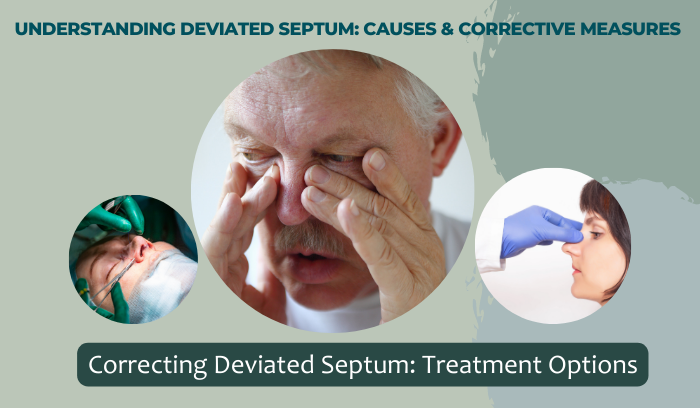A deviated nasal septum is a common condition that affects many individuals, causing various nasal symptoms and breathing difficulties. In this article, we aim to provide a comprehensive understanding of a deviated septum, including its causes and the corrective measures available to alleviate the associated problems.
A deviated septum occurs when the thin wall (septum) between the nasal passages is significantly shifted or crooked, causing an imbalance in airflow. This condition can be present at birth or result from an injury or trauma to the nose. While some people may have a deviated septum without experiencing any symptoms, others may face persistent nasal congestion, frequent sinus infections, snoring, or difficulty breathing through one or both nostrils. They may also experience nose bleeds from the affected side.
When it comes to correcting a deviated septum, there are various treatment options available. The most common and effective approach is a surgical procedure known as septoplasty. Septoplasty aims to straighten and reposition the septum, improving airflow and relieving symptoms associated with a deviated septum. During the procedure, an experienced ENT surgeon carefully adjusts the position of the septum, ensuring optimal nasal function and overall nasal health.
Septoplasty is typically performed as an outpatient procedure under general anesthesia. The surgeon makes an incision inside the nose, allowing access to the septum. They then reshape or remove the deviated portion of the septum to create a straighter nasal passage. In some cases, additional procedures such as turbinate reduction or sinus surgery may be performed simultaneously to address other nasal issues.
Recovery from septoplasty varies for each individual but generally involves a few days of downtime. Nasal congestion, swelling, and mild discomfort are common during the initial healing period. Nasal sprays, pain medications, and proper post-operative care can help manage these symptoms and promote a smooth recovery. Most patients experience significant improvement in their nasal airflow and associated symptoms following septoplasty.
It’s important to note that not all cases of deviated septum require surgical intervention. In mild cases or when symptoms are manageable, conservative measures such as nasal decongestants, saline rinses, and allergy management may be sufficient to alleviate the discomfort associated with a deviated septum.
If you suspect you have a deviated septum or are experiencing persistent nasal symptoms, it’s essential to consult with an ENT specialist. They will conduct a thorough evaluation, which may include a physical examination, nasal endoscopy, or imaging tests, to determine the severity of the deviation and the most appropriate course of action.
Remember, each case of a deviated septum is unique, and treatment plans should be tailored to individual needs. Consulting with a qualified ENT specialist is crucial to receive personalized care and achieve optimal outcomes. With the right treatment approach, individuals with a deviated septum can experience improved nasal function and find relief from the associated symptoms, breathing more freely and comfortably.

